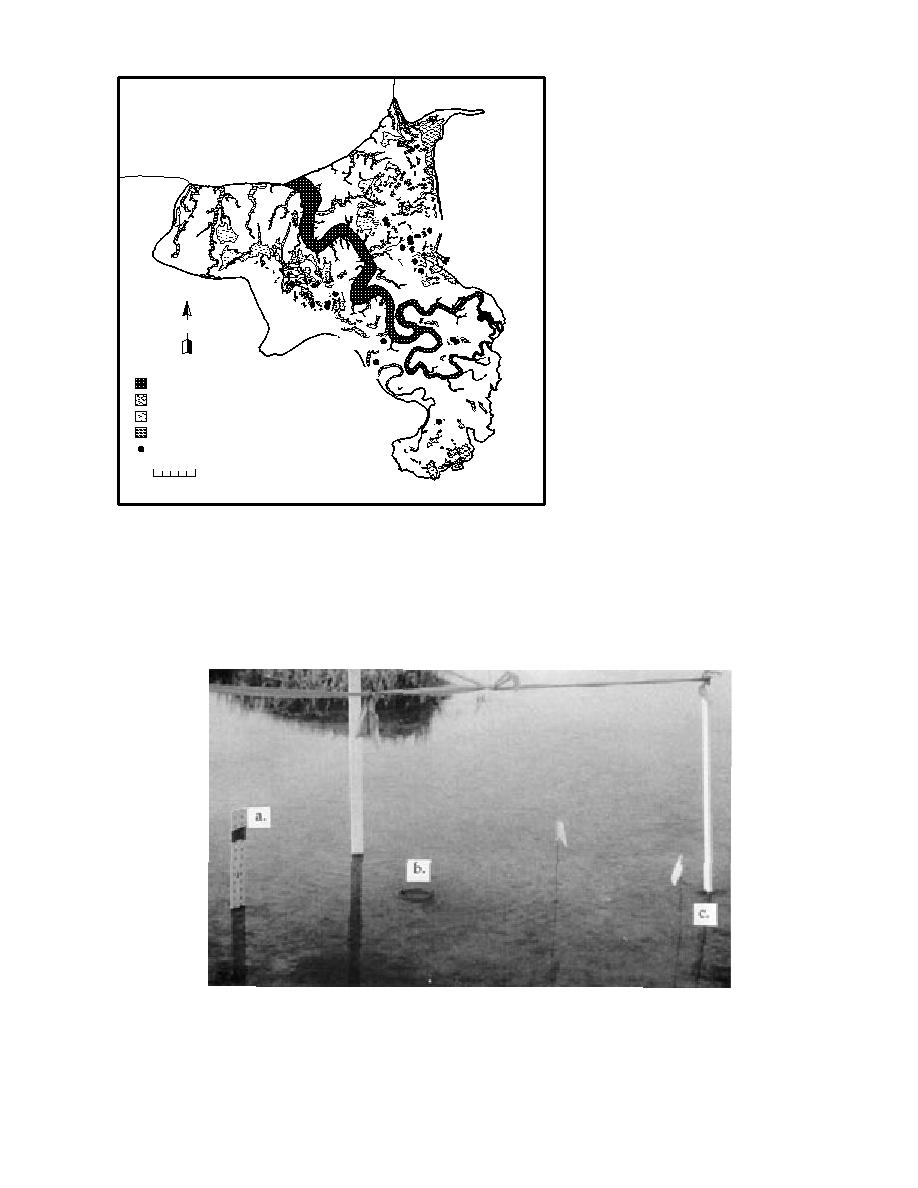
cleared or saved in plastic bags for
WP analysis.
Net sedimentation rate in ponds
is measured using a thin, rigid plas-
tic plate of about 30 cm square that
is pushed gently into the pond bot-
tom until the plate surface is flush
with the pond bottom surface. The
6
corners of the plate are secured by
10
89
5
aluminum tent pegs (Fig. 11 and 12).
7
4 3
Sediment in suspension settles onto
2
this plate, but this sediment can also
1
15
14
be reworked and resuspended by
wind or other mechanisms, thereby
13
N
12
delineating a net rate. Plates become
Illume Pond
11
covered by sediment and aquatic
vegetation in 1 to 2 weeks.
Amoeba Pond
P
Eagle River
Initially, in 1992, a stake with a
I ermanent Pond
millimeter-graduated scale on its
Area B
D termittent Pond
n
face was inserted into the pond bot-
Srainage Gully
tom, and the height of the pond bot-
edimentation Station
tom and the water column were mea-
sured to provide a second tally of
0
500 m
the net sedimentation rate (Fig. 11a).
However, surface waves and glare
Figure 10. Pond sedimentation stations.
commonly made this a difficult mea-
surement to obtain. In addition, aquatic vegeta-
We measured the quantity of accumulated sedi-
tion on the bed commonly covered the base of the
ment to the nearest 0.5 mm by inserting a gradu-
scale. For these reasons, only water levels are
ated scale into the sediments at three places. Af-
measured on these scales.
ter measurement, the sediment in the cup is
Figure 11. Sedimentation station in a pond site. A meter stake (a), cup sampler (b) and
plate sampler (c) are shown in position. The plate sampler is located between the two
survey flags.
14




 Previous Page
Previous Page
